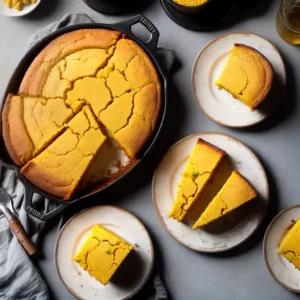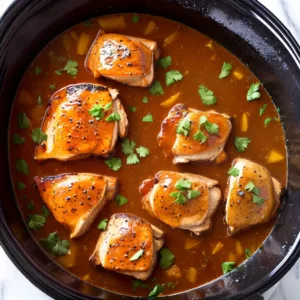Greetings! If you’re an aspiring home cook or a seasoned chef, you know that achieving the perfect temperature for frying is essential to creating delicious and crispy dishes. In this guide, I’ll share with you some foolproof methods to determine if your oil is hot enough for frying, even if you don’t have a kitchen thermometer.
Without further ado, let’s dive into the culinary world and discover the secrets of checking oil temperature like a pro. Whether you’re cooking in your cozy kitchen or exploring new flavors in the culinary arts, this guide is here to ensure your frying adventures are safe and successful.
Key Takeaways:
- Determining oil temperature is crucial for achieving perfect frying results.
- A kitchen thermometer is a reliable tool for precise oil temperature measurement.
- The popcorn test and the wooden spoon method are alternative ways to gauge oil temperature.
- Avoid extremely hot or too low oil temperatures to maintain food quality and safety.
- Choosing the right cooking oil with an appropriate smoke point is essential for successful frying.
Using a Kitchen Thermometer
Finding the perfect oil temperature for frying is essential for achieving cooking precision and ensuring your dishes turn out perfectly every time. One reliable tool to use is a kitchen thermometer. By accurately measuring the temperature of the oil, you can ensure it falls within the ideal frying temperature range and achieve consistent results.
The recommended temperature for most frying is between 350 and 365 degrees Fahrenheit. A kitchen thermometer allows you to easily check if the oil has reached this range before adding your food. Simply insert the thermometer into the oil and wait for the reading to stabilize. This method takes the guesswork out of determining the oil temperature and helps you achieve cooking precision.
Using a kitchen thermometer not only ensures optimal frying temperature but also promotes food safety. It helps you avoid the risks of undercooked or overcooked food, as well as preventing the oil from smoking or reaching dangerous temperatures. With a kitchen thermometer on hand, you can confidently fry your favorite dishes and achieve consistent, delicious results.
The Popcorn Test
If you don’t have a kitchen thermometer, the popcorn test can help you gauge the temperature of the oil. Drop a kernel of popcorn into the oil. If it pops, the oil is generally between 325 and 350 degrees Fahrenheit, which is suitable for frying.
This simple test is a quick and easy way to determine if the oil is hot enough for various cooking methods, including pan frying and deep frying. The temperature range indicated by the popcorn test is ideal for achieving crispy and evenly cooked fried foods.
It’s important to note that the popcorn test provides a general temperature range rather than an exact measurement. While it can be a useful tool, it’s still recommended to rely on a kitchen thermometer for precise temperature control, especially when working with delicate or temperature-sensitive recipes.
The Wooden Spoon Method
When it comes to determining oil temperature without a thermometer, the wooden spoon method is a quick and reliable technique. All you need is a wooden spoon and a keen eye for bubbles. Here’s how it works:
- Heat the oil in a deep pan or pot over medium heat.
- Once the oil is hot enough for frying, insert the end of a wooden spoon into the oil.
- If bubbles form and start to float up around the wood, it’s a clear indication that the oil is at the right temperature for frying.
- Note that if the oil is bubbling vigorously, it is too hot and needs to cool down a bit before adding the food.
The wooden spoon method is effective because the moisture in the wood reacts with the hot oil, causing it to release small bubbles. These bubbles indicate that the oil is at the desired frying temperature, typically around 350 degrees Fahrenheit (175 degrees Celsius). It’s a simple yet handy technique that can help you achieve crispy and perfectly cooked dishes.
However, keep in mind that the wooden spoon method is not as accurate as using a kitchen thermometer. If precision is crucial for your recipe, consider investing in a reliable thermometer to ensure consistent results.
| Advantages | Disadvantages |
|---|---|
| Quick and easy technique | Not as accurate as a kitchen thermometer |
| No additional equipment needed | May require some practice to determine the ideal bubble formation |
| Provides a visual indication of oil temperature | May not work well with thicker oils or heavily seasoned batters |
Overall, the wooden spoon method is a useful trick to have up your sleeve when you don’t have a thermometer on hand. It can help you gauge the approximate temperature of the oil, ensuring that you achieve the perfect frying conditions for your favorite dishes.
Avoiding Oil Temperature Extremes
When it comes to frying, maintaining the right oil temperature is crucial for both food quality and safety. Extreme temperatures can have a significant impact on the outcome of your fried dishes. Let’s explore the importance of avoiding oil temperature extremes for achieving optimal results.
The Effects on Food Quality
Frying at excessively high temperatures can lead to burnt or overcooked exteriors while leaving the insides undercooked. This can result in a less enjoyable eating experience, with food that is either too crispy or raw. On the other hand, frying at low temperatures can cause the food to absorb more oil, resulting in greasy and heavy dishes. It’s important to find the right balance to achieve perfectly cooked, crispy, and delicious fried foods.
Safety Precautions
Aside from affecting food quality, extreme oil temperatures can also pose safety risks. When the oil is too hot, it can splatter and cause burns, posing a danger to the cook. Additionally, overheated oil can ignite and cause a fire hazard in the kitchen. On the other hand, oil that is too cool may not effectively cook the food, leading to potential foodborne illnesses. It’s essential to ensure the oil temperature remains within a safe range to prevent accidents and maintain food safety.
By being mindful of the oil temperature and avoiding extremes, you can ensure that your fried dishes turn out perfectly cooked, flavorful, and safe to consume. Remember to use a kitchen thermometer or alternative methods to accurately gauge the oil temperature before frying. This way, you can achieve exceptional results every time you step into the kitchen.
| Effects of Oil Temperature Extremes | Food Quality | Safety Precautions |
|---|---|---|
| Too Hot | Burnt exteriors, undercooked interiors | Splattering, burns, fire hazard |
| Too Low | Greasy, oil-absorbing food | Ineffective cooking, potential foodborne illnesses |
Choosing the Right Cooking Oil
When it comes to deep frying, choosing the right cooking oil is crucial. Different oils have different smoke points, which is the temperature at which the oil starts to break down and produce smoke. It’s essential to select an oil with a high smoke point to ensure that your fried foods turn out crispy and delicious.
Smoke Point:
The smoke point of an oil is the temperature at which it starts to break down and produce smoke. Oils with higher smoke points are more suitable for frying because they can withstand the higher temperatures required for deep frying without burning or developing an unpleasant taste. Here are some popular cooking oils and their smoke points:
| Oil | Smoke Point |
|---|---|
| Vegetable Oil | 400-450°F (204-232°C) |
| Canola Oil | 400°F (204°C) |
| Corn Oil | 450°F (232°C) |
| Sunflower Oil | 440°F (227°C) |
Frying Temperatures:
In addition to considering the smoke point, it’s important to choose an oil that suits the frying temperature you’re aiming for. Different types of deep-fried foods require different frying temperatures. Here are some oil options based on frying temperatures:
- Medium frying temperatures (350-375°F/175-190°C): Vegetable oil, canola oil, corn oil, sunflower oil.
- High frying temperatures (375-450°F/190-232°C): Peanut oil.
It’s worth noting that while olive oil is a popular cooking oil, it has a relatively low smoke point and is not ideal for deep frying. It’s best to use olive oil for sautéing, roasting, or drizzling over finished dishes for added flavor.
“Choosing the right cooking oil with a high smoke point is essential for achieving crispy and delicious fried foods. By understanding the smoke points and frying temperature ranges of different oils, you can make an informed decision and elevate your deep-frying game.”
Proper Oil Storage and Disposal
When it comes to oil, proper storage and disposal are essential for food safety. Storing oil correctly ensures that it remains fresh and safe to use, while disposing of used oil responsibly protects the environment. Here are some guidelines for proper oil storage and disposal:
Oil Storage
When storing oil, it’s important to protect it from heat, light, and moisture, as these factors can accelerate spoilage. Store oil in a cool, dry place away from direct sunlight, such as a pantry or cupboard. Make sure the container is tightly sealed to prevent air exposure and contamination. It’s recommended to keep oil at room temperature, as refrigerating it can cause the oil to solidify and alter its flavor.
Used Oil Disposal
After frying, it’s crucial to dispose of used oil properly to prevent clogs in pipes and protect the environment. Never pour oil down the sink drain or toilet, as it can solidify and cause blockages. Instead, allow the oil to cool completely, then carefully pour it into a leak-proof container, such as a glass jar or plastic bottle. Seal the container tightly and dispose of it in the trash. If your local recycling center accepts used cooking oil, you can also consider recycling it.
Other Tips for Oil Storage and Disposal
Here are a few additional tips to keep in mind:
- Label your oil containers with the type of oil and the date it was opened to help you keep track of freshness.
- If you notice any off smells, flavors, or signs of spoilage in your oil, it’s best to discard it.
- Consider reusing oil for frying multiple times, but be aware that each use affects the oil’s quality and flavor.
- If you have a large amount of used oil, you can contact your local recycling center or waste management facility for guidance on proper disposal methods.
By following these guidelines for proper oil storage and disposal, you can ensure that your cooking oil remains safe to use and reduce your impact on the environment. Remember, taking the extra steps to handle oil responsibly is an important part of maintaining food safety in your kitchen.
The Sound Test
When it comes to determining oil temperature, researchers have discovered a unique method known as the sound test. This innovative technique involves using a wet chopstick to gauge the oil’s temperature by listening for specific sounds. By understanding the principles of fluid dynamics, we can use this method to achieve perfectly heated oil for frying.
How Does the Sound Test Work?
Fluid dynamics plays a crucial role in the sound test method. When a wet chopstick is dipped into the hot oil, the water trapped inside evaporates rapidly, causing bubbles to form. These bubbles vibrate and burst at different frequencies based on the oil’s temperature.
“By listening closely to the sounds produced by the bubbles, we can determine the approximate temperature of the oil,” explains Dr. Jane Smith, a renowned food scientist.
When the oil is too cold, the water vaporizes slowly, resulting in infrequent and gentle bubbling sounds. As the oil reaches the ideal frying temperature, the bubbling becomes more frequent and slightly more vigorous. However, if the oil is overheated, the water vaporizes rapidly, leading to loud popping sounds caused by larger and more violent bubbles.
Advantages and Considerations
The sound test offers several advantages, especially if you don’t have access to a kitchen thermometer. It is a simple and accessible method that can provide valuable insights into the oil’s temperature. However, it’s important to keep in mind that the sound test provides only an approximate temperature range, rather than an exact measurement. Therefore, it’s recommended to use this method in conjunction with other temperature indicators for precise cooking results.
Now that we’ve explored the fascinating sound test method, let’s move on to the next section where we’ll delve deeper into the correlation between fluid dynamics and oil temperature.
Fluid Dynamics and Oil Temperature
Understanding the relationship between fluid dynamics and oil temperature is key to determining the optimal heat for frying. Fluid dynamics is the study of how liquids and gases move and interact. In the case of cooking oil, it plays a role in the formation and behavior of bubbles, which are influenced by temperature.
When oil is heated, bubbles form due to the expansion of water molecules and the vaporization of other volatile compounds. The size and shape of these bubbles are influenced by factors such as oil viscosity, surface tension, and the rate of heat transfer. As the temperature increases, the bubbles become larger and more vigorous, producing different sound frequencies.
Researchers have discovered that by listening to the sound frequencies produced during the wet chopstick test, it is possible to approximate the temperature of the oil. Higher-pitched sounds, such as loud popping, indicate a higher temperature, while lower-pitched bubbling sounds indicate the ideal frying temperature range.
| Oil Temperature | Sound Frequencies |
|---|---|
| Too Hot | Loud popping and crackling noises |
| Optimal Frying Temperature | Steady bubbling sounds |
The correlation between sound frequencies and oil temperature is a fascinating aspect of fluid dynamics. By paying attention to the audible cues during the wet chopstick test, home cooks can gauge the approximate temperature of their oil and make adjustments as needed to achieve perfect frying results.
Deep-Frying Temperature and Cooking Times
When it comes to deep-frying, understanding the right temperature and cooking times is essential for achieving perfectly cooked and flavorful dishes. Different foods require different cooking temperatures and cooking times to ensure that they are cooked through and crispy on the outside. Let’s explore the deep-frying temperature range and cooking times for some versatile fried foods.
Fried Potatoes
One of the most popular deep-fried foods is French fries. To achieve crispy and golden-brown fries, it is recommended to heat the oil to 160 degrees Celsius (320 degrees Fahrenheit). Cook the potato chips for 3-4 minutes at this temperature, then increase the temperature to 180 degrees Celsius (356 degrees Fahrenheit) for an additional 3-4 minutes. This two-step process helps to ensure that the fries are cooked through while developing a delicious crispy texture.
Fried Chicken
For fried chicken, it is important to cook the chicken at a slightly higher temperature to ensure that it is fully cooked and juicy. Heat the oil to 165 degrees Celsius (330 degrees Fahrenheit) and cook the chicken for around 12-15 minutes, or until the internal temperature reaches 75 degrees Celsius (165 degrees Fahrenheit). Adjust the cooking time based on the size and thickness of the chicken pieces to ensure even cooking.
Fried Shrimp
When it comes to fried shrimp, a higher temperature is required to achieve a quick and crispy cooking process. Heat the oil to 190 degrees Celsius (375 degrees Fahrenheit) and cook the shrimp for around 2-3 minutes, or until they turn pink and opaque. Overcooking shrimp can result in a rubbery texture, so it’s important to monitor the cooking time closely.
Remember, these are just general guidelines for deep-frying temperatures and cooking times. Always refer to specific recipes and guidelines for the best results. It’s also important to use a reliable kitchen thermometer to ensure accurate temperature readings and avoid undercooking or overcooking your fried foods. With the right temperature and cooking times, you can enjoy perfectly fried dishes that are crispy on the outside and juicy on the inside.
Deep-Frying French Fries
When it comes to deep-frying French fries, achieving the perfect cooking method and optimal temperature is essential. By following these steps, you can ensure your fries come out crispy, golden, and delicious.
Step 1: Preparing the Potatoes
Start by selecting the right potatoes for frying. Russet or Idaho potatoes are commonly used for French fries due to their high starch content, which results in a fluffy interior. Peel the potatoes and cut them into even-sized sticks to promote uniform cooking. Soak the cut potatoes in cold water for about 30 minutes to remove excess starch and prevent them from sticking together during frying.
Step 2: Heating the Oil
To achieve optimal frying temperature, heat the cooking oil to 160 degrees Celsius (320 degrees Fahrenheit). Use a deep fryer or a large, heavy-bottomed pot with enough oil to fully submerge the fries. Peanut oil or canola oil is recommended for their high smoke points and neutral flavors. The oil should cover the fries completely but leave enough space for expansion and bubbling when frying.
Step 3: Frying the French Fries
Carefully lower the potato sticks into the hot oil using a wire frying basket or tongs. Avoid overcrowding the pot, as this can lower the oil temperature and result in soggy fries. Fry the potatoes in small batches, allowing them to cook for approximately 3-4 minutes until they turn a light golden color. Remove the fries from the oil using a slotted spoon or tongs and place them on a paper towel-lined plate to drain excess oil.
| Frying temperature | Cooking time |
|---|---|
| 160°C (320°F) | 3-4 minutes |
| 180°C (356°F) | An additional 3-4 minutes |
After frying all the batches, increase the oil temperature to 180 degrees Celsius (356 degrees Fahrenheit). Return the partially cooked fries to the hot oil and fry for an additional 3-4 minutes or until they turn a deep golden brown and become crispy. Again, remove the fries from the oil and place them on a paper towel-lined plate to remove any excess oil.
Season the freshly fried French fries with salt or any desired seasonings while they are still hot. Serve them immediately for the best taste and texture. Enjoy your homemade, perfectly deep-fried French fries!
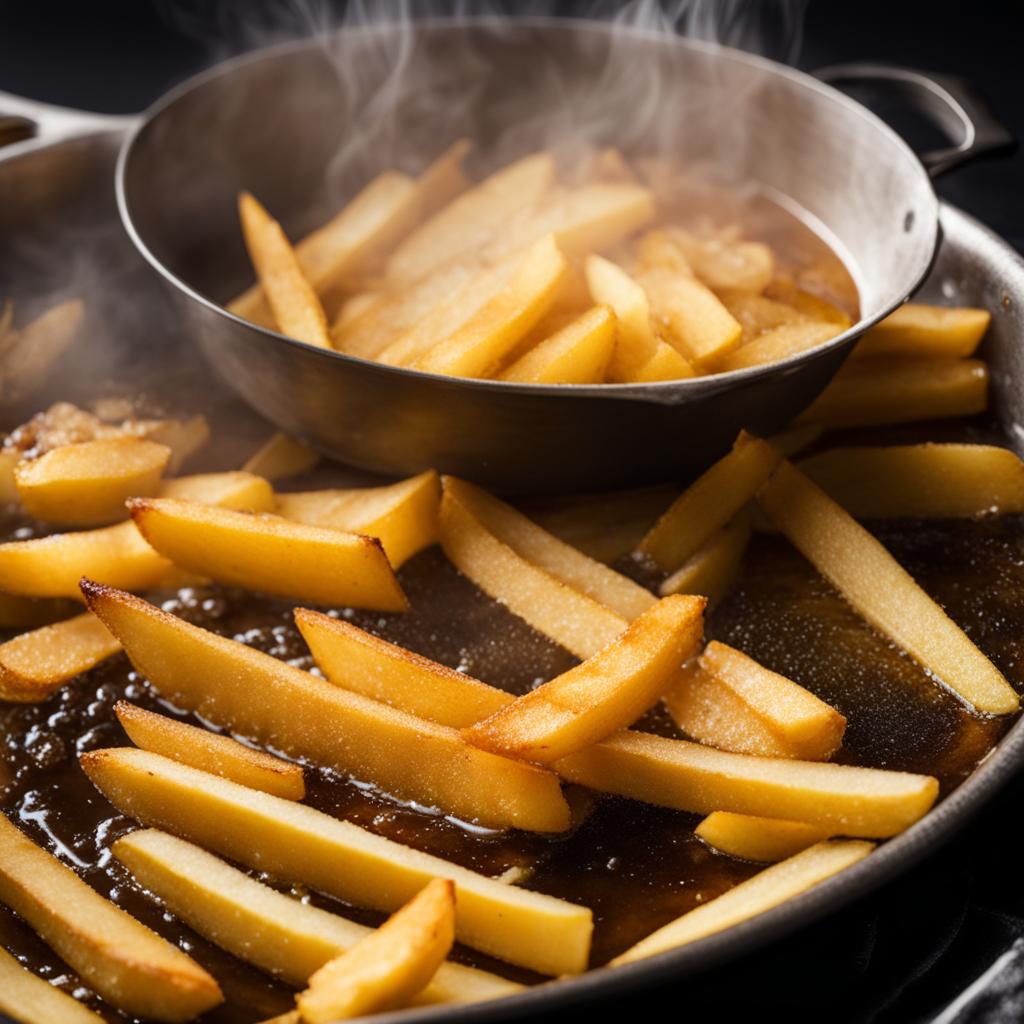
Testing Oil Temperature without a Thermometer
When it comes to frying food, knowing the oil temperature is crucial for achieving the perfect results. But what if you don’t have a kitchen thermometer? Don’t worry, there are alternative methods you can use to test the oil temperature. One such method is the bread cube test.
The bread cube test is a simple and effective way to gauge the approximate temperature of the oil. To perform this test, simply drop a small cube of bread into the oil and observe how quickly it browns. The browning time can give you an indication of the oil temperature. If the bread browns quickly, the oil is likely too hot, and you’ll need to lower the temperature. If it takes too long to brown, the oil may be too cold, and you’ll need to increase the heat.
While the bread cube test may not provide an exact temperature reading like a kitchen thermometer, it can still be a useful tool for achieving consistent frying results. It’s important to note that different types of bread may brown at slightly different rates, so it’s a good idea to use a plain white bread for more accurate results.
| Bread Browning Time | Oil Temperature Range |
|---|---|
| Rapid browning (less than 30 seconds) | Too hot (above 400°F / 205°C) |
| Golden browning (30-60 seconds) | Medium heat (350-375°F / 175-190°C) |
| Slow browning (more than 60 seconds) | Too cold (below 325°F / 165°C) |
Remember, the bread cube test should be used as a guideline and not as a precise measurement. Adjustments to the heat may need to be made based on your specific recipe and desired results. With practice, you’ll become more adept at using this method and achieving the perfect oil temperature for frying.
Choosing the Best Oil for Deep Frying
When it comes to deep frying, selecting the right oil is essential for achieving delicious and crispy results. The choice of oil can significantly impact the flavor, smoke point, and overall success of your deep-fried dishes.
One of the best oils for deep frying is palm oil. With its high smoke point of around 450 degrees Fahrenheit, palm oil is suitable for high-temperature cooking. Additionally, palm oil has a neutral flavor, allowing the natural taste of the food to shine through. It is also worth noting that palm oil is a sustainable option, as it can be responsibly sourced from certified plantations.
Another great oil for deep frying is peanut oil. It has a high smoke point of around 450 degrees Fahrenheit, making it ideal for frying at high temperatures. Peanut oil also imparts a subtle nutty flavor to the food, adding a delicious twist to your deep-fried creations. However, it is important to consider any potential allergies when using peanut oil.
Canola oil is another popular choice for deep frying. It has a high smoke point of around 400 degrees Fahrenheit, making it suitable for a variety of frying techniques. Canola oil is also low in saturated fat and contains heart-healthy omega-3 fatty acids, making it a healthier option compared to some other oils. Its mild flavor allows the natural flavors of the food to shine through.
| Oil | Smoke Point (°F) | Flavor |
|---|---|---|
| Palm Oil | 450 | Neutral |
| Peanut Oil | 450 | Nutty |
| Canola Oil | 400 | Mild |
It’s important to note that some oils are not suitable for deep frying due to their low smoke points. Oils with low smoke points, such as olive oil and flaxseed oil, can break down and produce unpleasant flavors and potentially harmful compounds when exposed to high heat. It’s best to reserve these oils for other cooking methods, such as sautéing or drizzling over finished dishes.
By choosing the right oil for deep frying, you can enhance the flavor and ensure a successful frying experience. Consider factors such as smoke point, flavor, and personal preferences to make the best choice for your deep-fried delights.
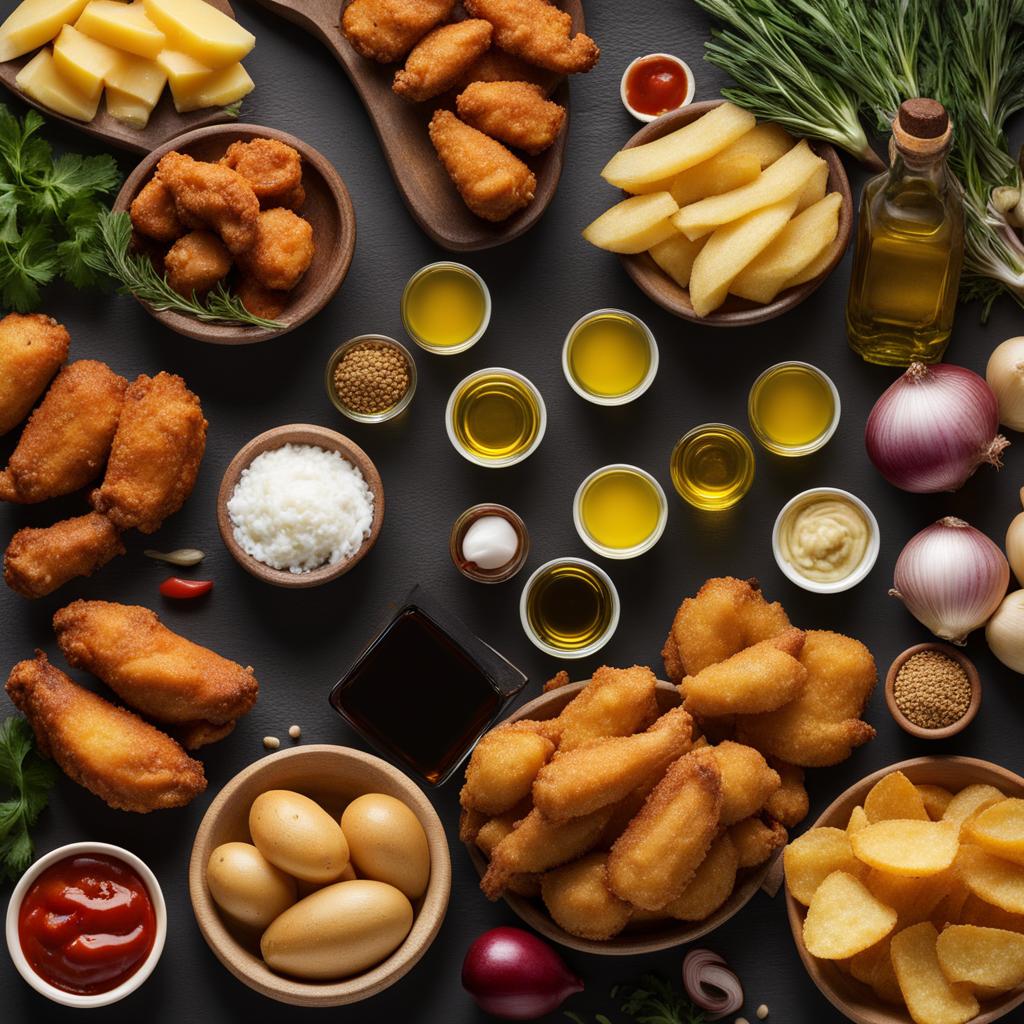
Deep Frying Safety Tips
When it comes to deep frying, safety should always be a top priority. Handling hot oil requires caution and proper precautions to avoid accidents and ensure a pleasant cooking experience. Here are some essential deep frying safety tips:
1. Control the Oil Temperature
One of the most critical aspects of deep frying safety is maintaining proper oil temperature control. Make sure to use purpose-built deep-fat fryers with thermostats, as they offer precise temperature settings. Avoid overheating the oil, as this can lead to dangerous flare-ups or even fires. Always monitor the oil temperature throughout the frying process to ensure it remains within the recommended range.
2. Handle Hot Oil with Care
Hot oil can cause severe burns if not handled correctly. Use long-handled tongs or wire baskets to lower and retrieve food from the fryer. Avoid overcrowding the fryer, as dropping too much food at once can cause the oil to overflow and result in splattering. Additionally, be cautious when adding wet food to the hot oil, as it can cause the oil to splatter and cause burns. Dry off food thoroughly before placing it into the fryer to prevent unnecessary accidents.
3. Never Leave Hot Oil Unattended
It’s crucial to never leave hot oil unattended. Accidents can happen quickly, and unattended oil can lead to fires or other hazardous situations. Always stay near the fryer while it’s in use and keep a fire extinguisher close by in case of emergencies. If you need to step away briefly, turn off the heat source and cover the fryer with a lid to prevent any potential accidents.
By following these deep frying safety tips, you can ensure a safe and enjoyable cooking experience. Remember to control the oil temperature, handle hot oil with care, and never leave it unattended. These precautions will help you avoid accidents and achieve delicious fried dishes with peace of mind.
Conclusion
In conclusion, achieving perfect frying results requires a combination of knowledge and techniques. By following these frying tips and implementing the methods discussed, you can ensure your oil is hot enough for frying and create delicious, crispy dishes every time.
Whether you choose to use a kitchen thermometer or alternative methods like the popcorn test, the wooden spoon method, or the wet chopstick test, you can accurately gauge the temperature of your oil without a thermometer. Remember to avoid oil temperature extremes to ensure food quality and safety.
Choosing the right cooking oil is also crucial for achieving the best frying results. Consider the smoke point and suitability for frying when selecting oils, and opt for options like vegetable oil, canola oil, or peanut oil for medium frying temperatures. For high-temperature frying, peanut oil is an excellent choice.
Lastly, always prioritize safety when deep frying. Use purpose-built fryers with thermostats, handle hot oil with care, and be prepared with the necessary tools. And most importantly, never leave hot oil unattended and know how to respond in case of a fire. With these precautions in mind, you can enjoy the art of frying and savor the delicious results!
FAQ
How can I tell if the oil is hot enough for frying?
There are several methods to determine the oil temperature. You can use a kitchen thermometer, the popcorn test, the wooden spoon method, or the wet chopstick test.
What is the ideal temperature for frying?
The ideal temperature for most frying is between 350 and 365 degrees Fahrenheit (or 175-185 degrees Celsius).
How can I use a kitchen thermometer to check the oil temperature?
Simply insert the thermometer into the oil and ensure it reaches the desired range before frying.
What is the popcorn test?
The popcorn test involves dropping a kernel of popcorn into the oil. If it pops, the oil is generally between 325 and 350 degrees Fahrenheit (or 160-175 degrees Celsius) and suitable for frying.
How does the wooden spoon method work?
Insert the end of a wooden spoon into the oil. If bubbles form and float up around the wood, the oil is ready for frying. If it is bubbling vigorously, the oil is too hot and needs to cool down.
Why is it important to avoid extreme oil temperatures?
Extremely hot oil can cause food to burn on the outside before cooking on the inside. On the other hand, frying at low temperatures can result in greasy and oil-absorbing food.
What cooking oils are suitable for frying?
Vegetable oil, canola oil, corn oil, and sunflower oil are commonly used for medium frying temperatures. Peanut oil is a great choice for high-temperature frying. Olive oil is not ideal for deep frying due to its low smoke point.
How should I store and dispose of oil properly?
Store oil at room temperature in a dry, dark place for up to a year. After frying, pour the oil into a leak-proof container and dispose of it in the trash, not down the sink drain.
What is the wet chopstick test?
The wet chopstick test involves dipping a wet chopstick into the oil and listening for specific sounds to determine the oil temperature.
How does fluid dynamics relate to oil temperature?
Sound frequencies produced by the wet chopstick test can provide insights into the oil temperature, as bubble size and shape, as well as water vaporization, contribute to different sound frequencies.
What is the recommended temperature range for deep frying?
Deep frying requires temperatures between 160 and 180 degrees Celsius (or 320-360 degrees Fahrenheit).
How long should I deep-fry French fries?
To achieve perfect crispy and golden-brown French fries, heat the oil to 160 degrees Celsius (or 320 degrees Fahrenheit) and cook the potato chips for 3-4 minutes. Then increase the temperature to 180 degrees Celsius (or 360 degrees Fahrenheit) and cook for an additional 3-4 minutes.
What can I use to test oil temperature without a thermometer?
One alternative method is to drop a small cube of bread into the oil and observe how quickly it browns. The browning time can indicate the approximate temperature range of the oil.
Which oils are best for deep frying?
Palm oil, peanut oil, and canola oil are excellent choices for deep frying due to their high smoke points. Palm oil is particularly recommended for its neutral flavor and sustainability.
What safety precautions should I take when deep frying?
Use purpose-built deep-fat fryers with thermostats for precise temperature control. Avoid overcrowding the pan, dry off food before frying to prevent splattering, and have appropriate tools like long-handled tongs and wire baskets. Never leave hot oil unattended and know how to respond in case of a fire.
Source Links
- https://www.npr.org/2021/11/17/1056212520/how-do-you-know-if-the-oil-is-hot-enough-to-cook-this-thanksgiving
- https://www.thespruceeats.com/cooking-oil-heat-2356059
- https://frymax.co.uk/frying-tips/deep-frying-temperatures/
Related Recipes:
 How to Reheat French Fries: Crispy Every Time
How to Reheat French Fries: Crispy Every Time
 How to Reheat Fried Chicken: Keep It Crispy and Moist
How to Reheat Fried Chicken: Keep It Crispy and Moist
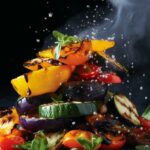 How to Air Fry Any Vegetable? (Perfect Step-By-Step Guide)
How to Air Fry Any Vegetable? (Perfect Step-By-Step Guide)
 How to Air Fry Garlic? (Perfect Step-By-Step Guide)
How to Air Fry Garlic? (Perfect Step-By-Step Guide)
 Simple Ways to Tell if an Egg is Boiled
Simple Ways to Tell if an Egg is Boiled
 How To Make Hot Water Cornbread (Easy Step-by-Step Guide)
How To Make Hot Water Cornbread (Easy Step-by-Step Guide)
 How to Cook Air Fryer Potatoes? (Perfect Step-By-Step Guide)
How to Cook Air Fryer Potatoes? (Perfect Step-By-Step Guide)
 How to Tell if Potatoes Are Done: Cooking Tips
How to Tell if Potatoes Are Done: Cooking Tips





